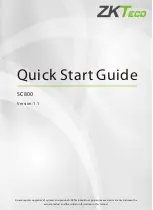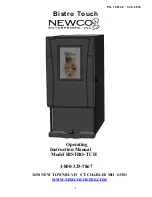
11
DHOLLANDIA
WARNING
The mobile column lift must not be used if the operator is intoxicated, impaired or distracted in any way. NEVER use a phone
or mobile device while operating the mobile column lift.
Limit the operation of the mobile column lift to one single operator. Operation of the mobile column lift by more than one
operator at a time may cause confusion and increase the risk of serious bodily injury or death.
The mobile column lift shall be used by means of its original control units only. Operating the mobile column lift with non-
original controls will increase risk of serious bodily injury or death to the operator or any bystanders.
Prior to switching the main power switch on, check if the mobile column lift can be used safely. Take precautions to ensure
your own safety and that of any casual bystanders.
Inspect the mobile column lift prior to each use. If any unsafe condition exists or unusual noises or movements are noticed,
DO NOT use the mobile column lift and contact an authorized DHOLLANDIA service agent for repair. Please see daily pre-
operation inspection procedures under 7.4 on page 16.
Make sure the mobile column lift is used in a safe environment, complying with all applicable healthy and safety regulations.
Make sure the lift does not block essential emergency escape routes out of the workshop.
The mobile column lift is designed for indoor use only. It should not be used outside and exposed to rain and snow, dirt and
mud and other adverse environmental conditions.
Do not operate the mobile column lift on wet, dirty or muddy surfaces.
To reduce the risk of serious bodily injury or death, make sure the working zone is sufficiently lighted.
Prior to operating the mobile column lift, the lift columns and vehicle must be safely parked on level and solid ground, have
the parking brake applied, and the engine switched off. Secure all moving parts of the vehicle body.
The ground on which the mobile column lift is used should have no more than 2° inclination, to prevent the lift columns from
tilting over.
Check with the building contractor or architect if the floor is sufficiently strong and stable to carry the load of the complete set-
up. As asphalt is prone to damage and deformation under heavy point loads, even more so at higher temperatures. DO NOT
use mobile column lifts on asphalt surfaces.
Observe the vehicle carefully while it is being raised / lowered. If it becomes unstable or an unsafe situation arises, stop
immediately. Contact your supervisor or DHOLLANDIA for advice. See contact info on page 3.
When using more than one pair of lift columns, ALWAYS make sure that the vehicle is lifted level front / back and left / right.
If not, stop immediately. Contact your supervisor or DHOLLANDIA for advice. Follow the levelling procedures in section 9.8
on page 28 to synchronise the master and slave columns.
Ensure that the vehicle cannot tip-over when being lifted / lowered. Make sure the vehicle and the body are empty; maximize
the spread between the consecutive mobile column lifts and make sure the unsupported overhangs in front of and behind the
lift columns are not overweight. Failure to abide by these instructions can result in serious bodily injury or death to the operator
or bystanders.













































